I got back from a family trip to Lijiang (Yunnan) last week. It was quite interesting being there again when my first and only trip to Lijiang happened a full 20 years ago! (Yeah, yeah… I’m old!)
I remember even then that some tourists were lamenting that Lijiang was “too commercialized.” Obviously it’s more commercialized now, but I still found it nice. One big difference is that while I used to see Naxi women in the “old town” of Lijiang wearing their traditional clothing selling food, clothing, and trinkets, I no longer do. Instead, it’s lots of tourists (mostly young women) decked out in rented Naxi garb (or even Tibetan) in order to take photos.
But anyway, I’m back in Shanghai now, and one of the reasons I’m happy to be back is that I can continue to experiment with ChatGPT every day. It’s super addictive and fun, and it also has great potential for Chinese learning. So I thought I’d share a few things I’ve discovered. I’m planning to go into more specifics in an upcoming series on the AllSet Learning blog.
What Can Chat GPT do in Chinese?
Here’s a simple rundown of some of the many things you can do with ChatGPT, starting with the obvious and getting more specific:
- Translate between English and Chinese (or whatever other languages ChatGPT can handle)
- Adding pinyin to Chinese (it often does this by default for Chinese output when the prompt is in English)
- Provide both simplified and traditional characters, or convert between the two
- Create frequency lists of Chinese characters (limited)
- Creating lists of Chinese words
- Provide Chinese characters with pinyin for an article in English which mentions Chinese words.
- Generate short paragraphs in Chinese on any topic
- Generate short paragraphs of text in both English and Chinese (parallel texts)
- Respond in Chinese to chat prompts in Chinese
Sounds pretty cool, right? OK, but hold on… it doesn’t do any of these tasks perfectly. It does most of them well, though (especially general translation).
Here’s an example of me asking for the Chinese words (with pinyin) for English output about Lijiang it had just given me:
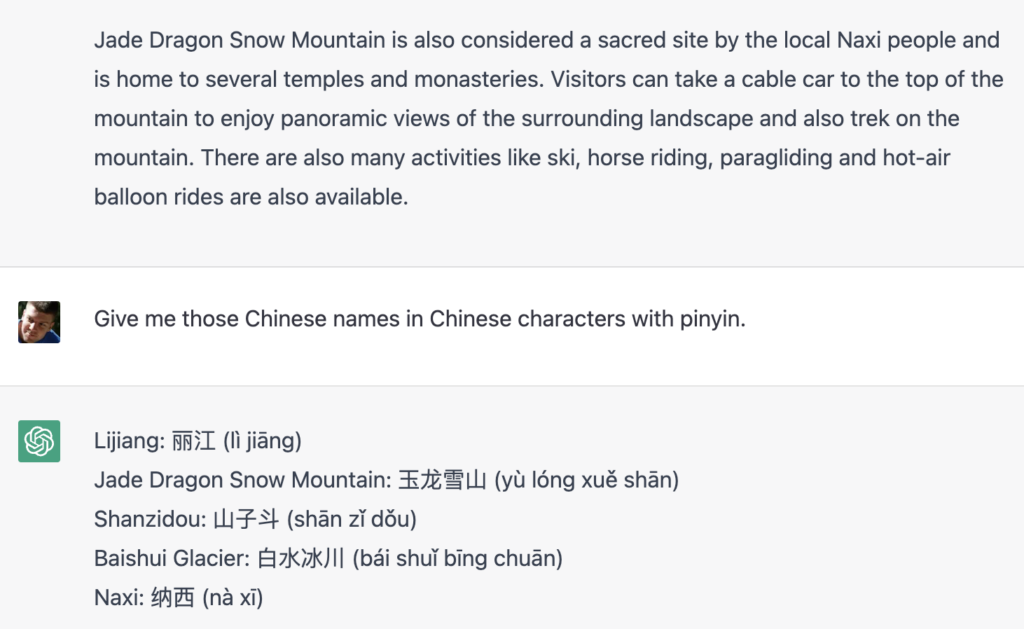
I had it generate a frequency list of Chinese characters using a custom format I wanted (with the slashes and parentheses), and also including Japanese. It did take a bit of back and forth to get the formatting right, but here’s the result:
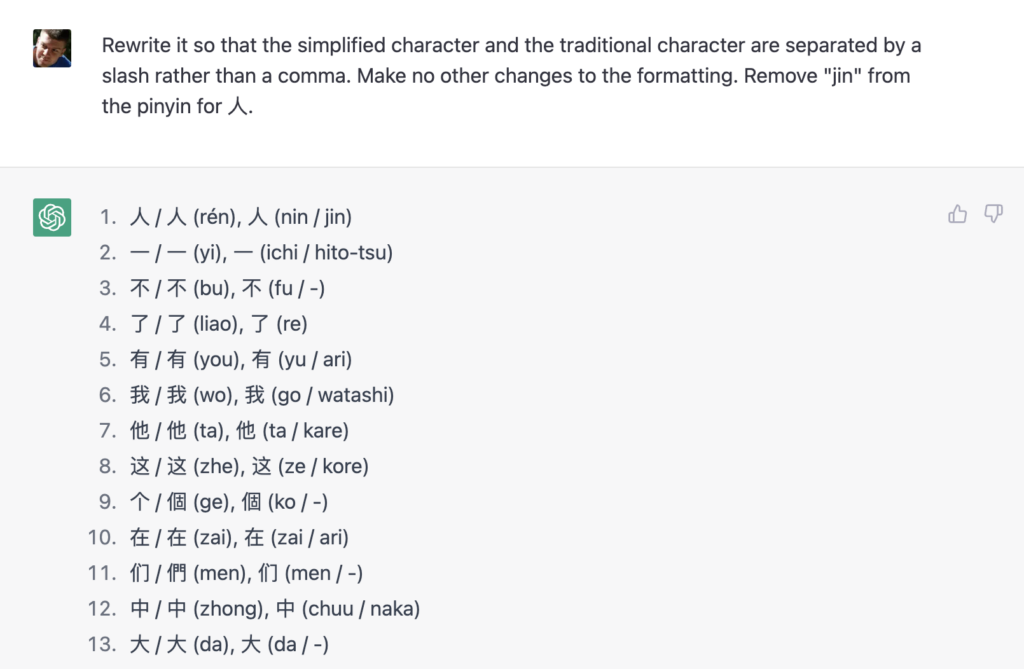
BUT, you may be surprised to learn that ChatGPT doesn’t have access to Chinese word frequency data, so word frequency lists will be trickier.
Let’s get into more specifics about some of the other problems.
Problems with Using ChatGPT for Chinese
OK, first of all, the obvious: it sometimes just plain gets stuff wrong. You can correct it, and it will readily admit and correct its mistake, but you might not realize the mistake is there at all.
Here’s a simple pinyin mistake I called it out on:

Another annoying thing is that, by default, pinyin is not grouped by words (it’s not word segmented). You can get ChatGPT to segment by words, but it’s harder than you might expect. It took me quite a few tries, and in the end, I had to manually segment the pinyin of the first sentence for it and provide that as a model. After that, ChatGPT was able to do the word segmentation (more or less) correctly.
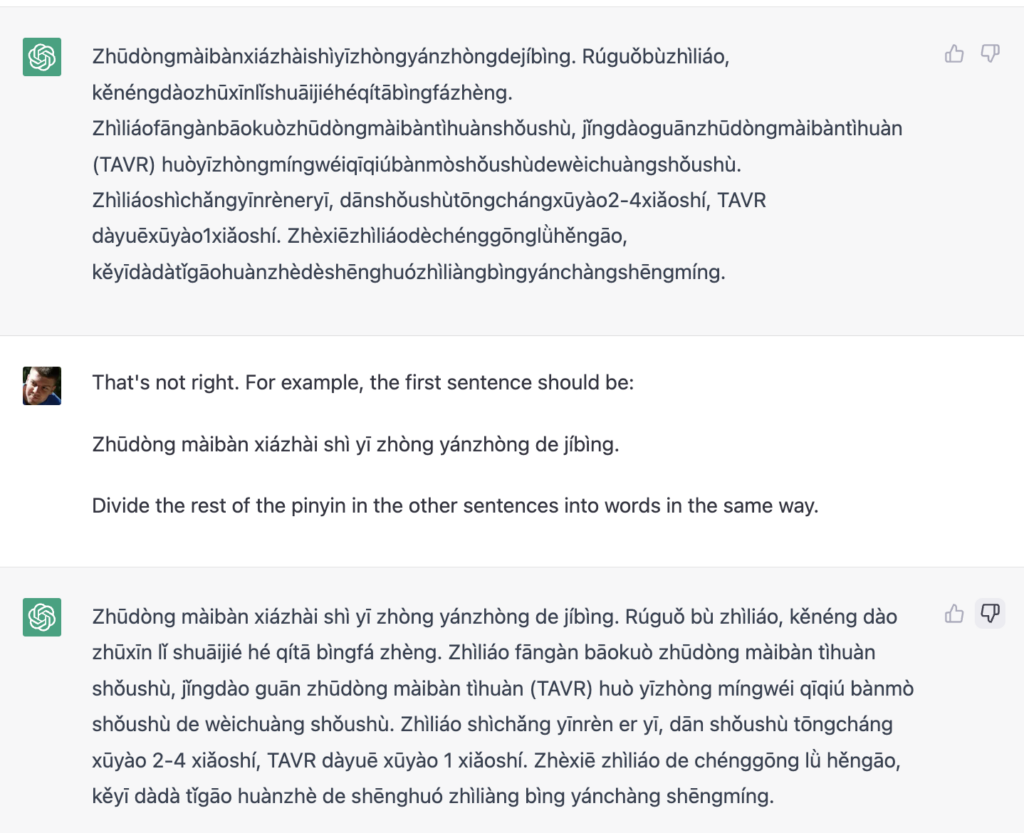
It can also easily make factual errors about stuff related to Chinese. It looks more “correct” when it’s accompanied by pinyin, but it still might be just plan wrong!
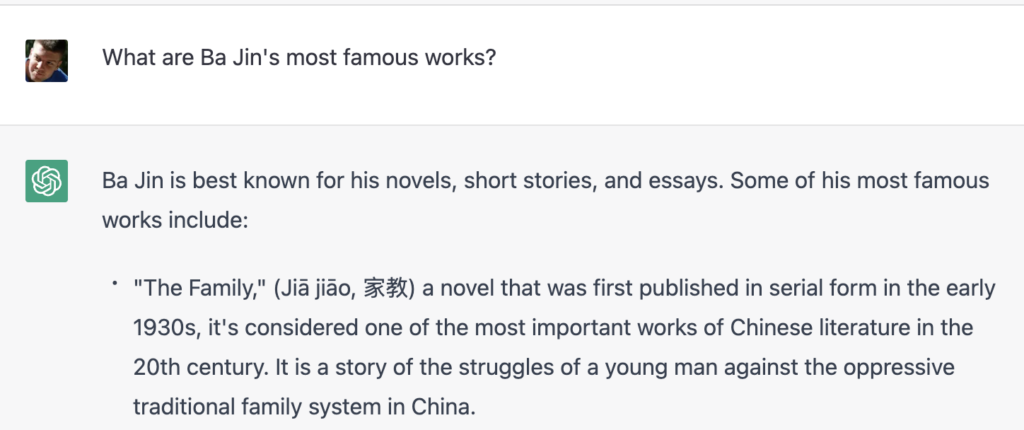
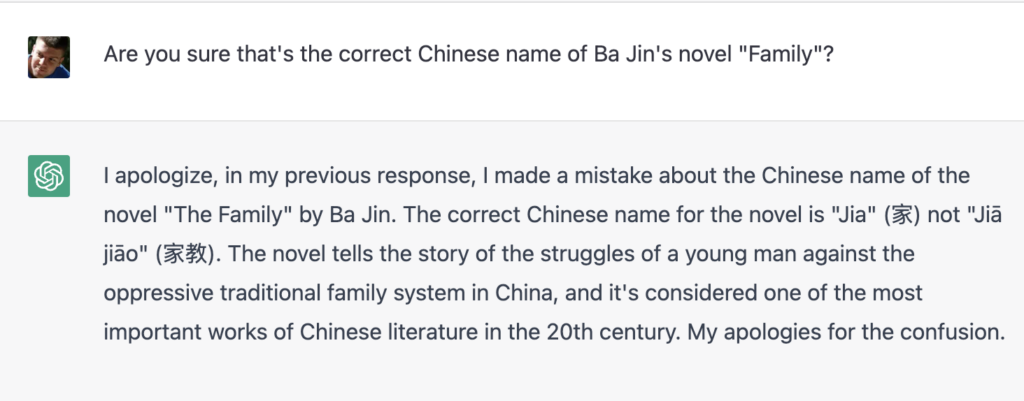
Sometimes it uses the wrong punctuation for Chinese (maybe because I was mixing the languages in my prompts). You can ask it to fix that, but it’s still annoying.
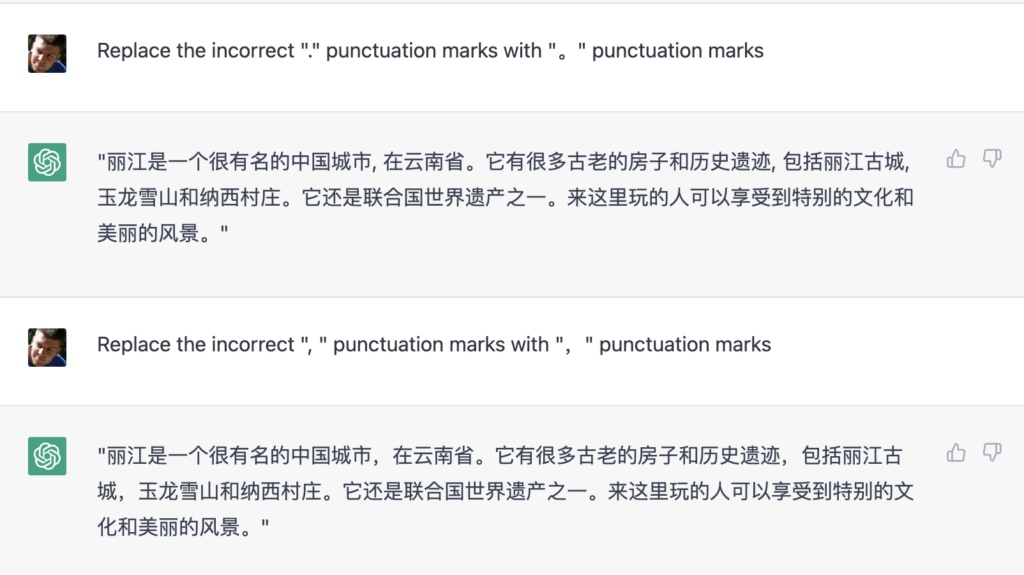
How about simplifying? You might have high hopes for this, considering that ChatGPT is quite good at simplifying English explanations. It can do it in Chinese, too, but often not well. It does not seem to have a sense of what is “difficult” for learners. I imagine this is largely result of an absence of such material for the AI’s training, but the result is very real. ChatGPT is not good at writing very simple texts for learners.
Here’s an example of me trying to get it to simplify text as far as possible:
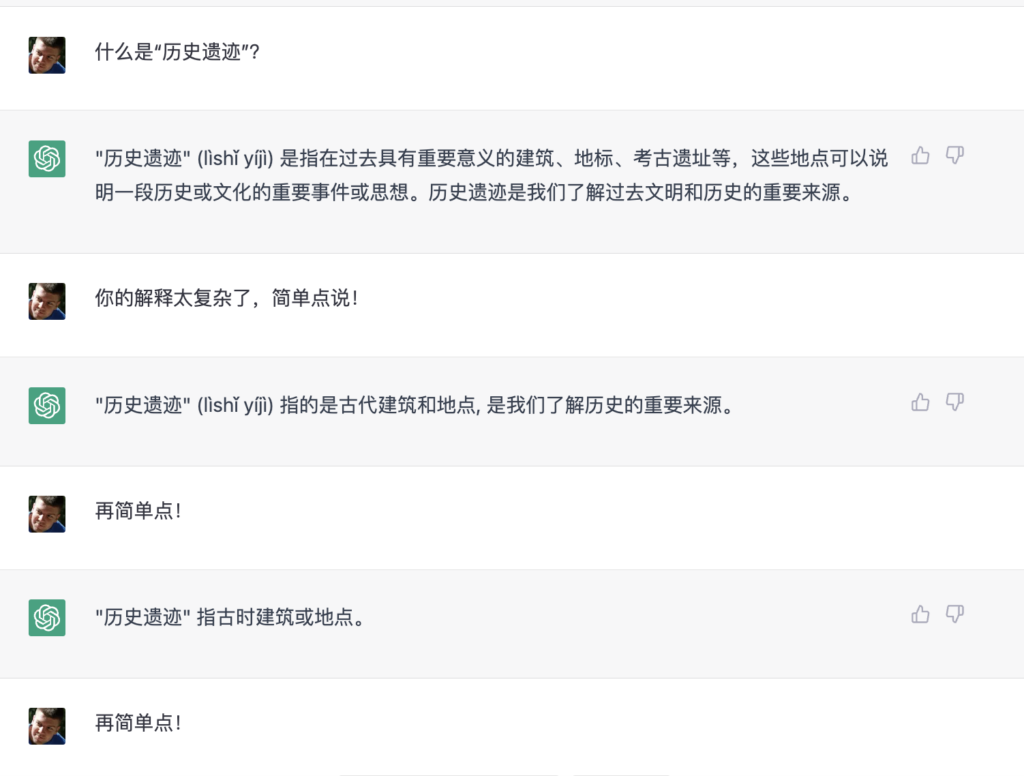
This went on for a bit longer, and the end result was:
“历史遗迹” 是古代建筑或地方。
I’m sure ChatGPT will get better at a lot of this stuff, but likely not before ChatGPT becomes a paid service. (There’s plenty of room int he market for specialized AI products, though!)
What to Use ChatGPT for to Learn Chinese
So what should you use ChatGPT for as a learner?
- Learn about Chinese culture and get the vocabulary with it. I love being able to ask for the Chinese (with pinyin) when discussing any topic in English. This is something that annoys me when reading in-depth articles on topics related to China: they often don’t provide the Chinese at all (or maybe just pinyin with no tone marks).
- Chat in Chinese. Hey, it’s a chat bot, after all? It’s infinitely patient, can provide pinyin, can say things in different ways, etc. It might not always use simple Chinese, but there’s still loads of potential there.
- Generate short texts. If you’re intermediate (or close to it), you could try generating short texts on topics you’re interested in. You could try jokes or even short stories. I’ve found that in general, the fewer constraints you give ChatGPT on its output, the more natural that output will be. So while you may not be able to restrict a text to only the Chinese that a first grader would know, you can still ask for texts on simple topics.
Keep experimenting! This stuff is only the tip of the iceberg. This blog post is more of a “quick and dirty assessment” than a comprehensive review. If you’ve discovered some cool uses of ChatGPT related to learning Chinese, I would love to hear about it.




